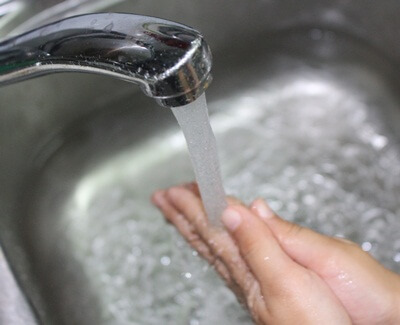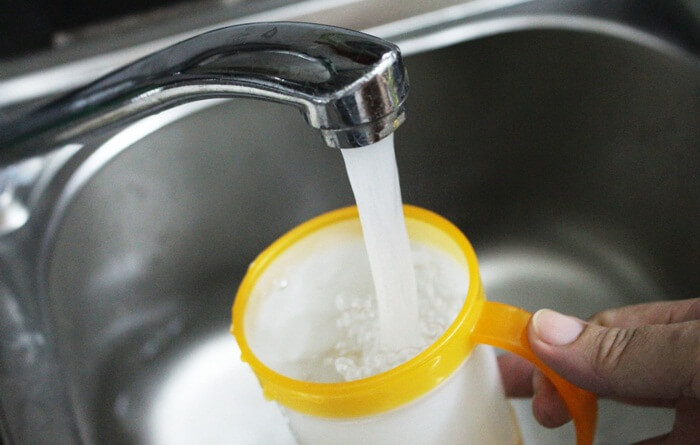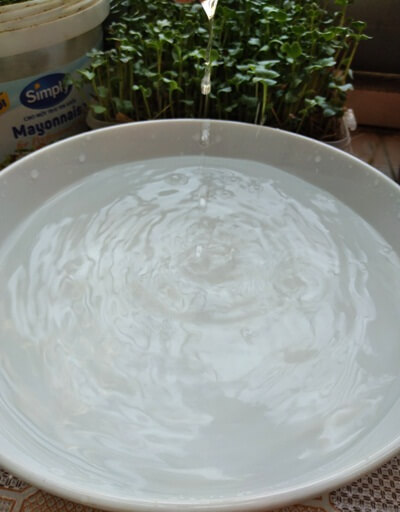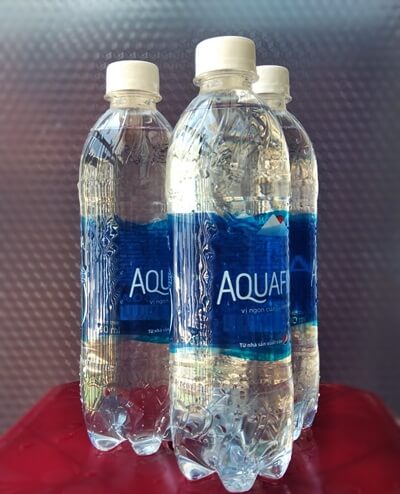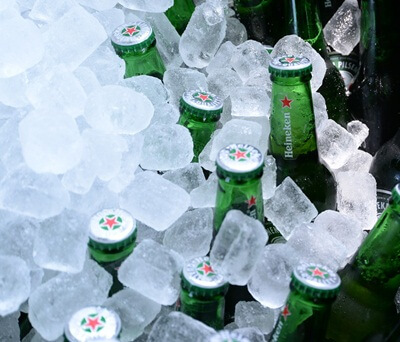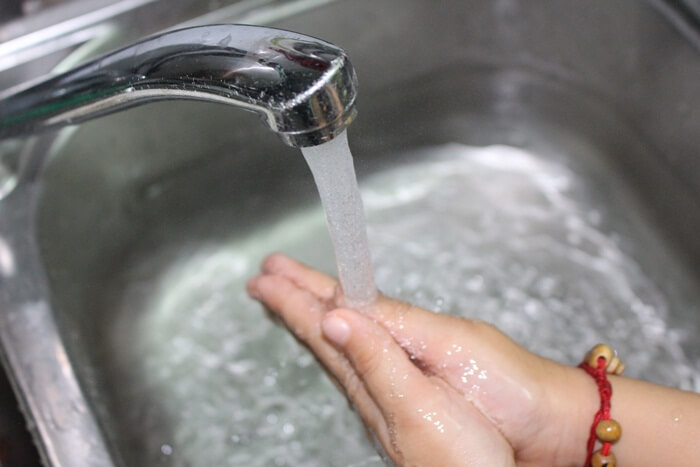You would like to study water in Vietnam to know safe use when traveling to this lovely country.
In this article, Vietnamdrive will mention:
Get a deep dive into each one, or jump to any part that you like to notice!
How is tap water in Vietnam?
Tap water is the main source of domestic water supply in major provinces and cities of our country today. When judged by the senses, tap water looks clear, clean, and free of dirt.
Tap water in Vietnam, taken from groundwater or water from rivers, lakes, and ponds, is treated through a water purification system with industrial treatment methods. And then, it is supplied to households through pipes, being endpoints in the water faucet.
The tap water treated at treatment plants serves the needs of the people. Most of this source meets the domestic water standards set by the Ministry of Health of Vietnam and is safe to use in daily life.
Can you drink it directly?
In Vietnam, almost no one is confident or dares to use tap water for drinking directly without cooking or other treatment methods.
There are reasons to explain why you cannot drink tap water in Vietnam:
- Firstly, the water treatment system and technology here are still not good. Upstream water, when brought in, will be filtered from dirt, residue, and algae and uses chlorine to remove some heavy metals and bacteria. However, this is just a basic step, not a thorough one. Tap water still contains some bacteria and chemicals, especially chlorine chemical residues. So, it can be said that water is relatively clean, but not for direct drinking.
- Second, the quality of the water pipeline system in Vietnam is not stable. The pipes have not been replaced for a long time and are often rusted and covered with dirt. So, even if the water source is clean when running through these pipes, it will also be contaminated with heavy metals, dirt, bacteria, etc. Also, pipeline monitoring, maintenance, inspection, and repair can be costly.
- In addition, more importantly, the water system needs to be disinfected regularly, which is difficult to do effectively because of lacking finances and technique.
If not treated carefully before drinking, tap water can affect human health. Many areas have very foul tap water and a high concentration of chlorine because, in the process of treating tap water, chlorine is left over, drinking excess chlorine is toxic to the liver, kidneys, and digestive system. That’s not to mention the metal substances contaminated in the water, which are many times more toxic with a high risk of causing cancer.
Water quality in Vietnam
Most of the cities in Vietnam have tap water to use, which means that the urban habitats meet the basic requirements of water standards to use in their daily life.
However, many rural areas in Vietnam use water from bore wells, dug wells, or springs.
Many people in the mountainous regions and the Central Highlands are still not aware of the importance of clean water.
When asked whether the water they are using is hygienic or not, many people think that having water to use is already very lucky, but the quality of the water source is not mentioned.
Although the state has built several clean waterworks in mountainous areas and rural villages, many projects are damaged quickly. Also, the local people there have faced unsafe water, which is heavily contaminated with alum, salt, or lime.
Therefore, when traveling to rural or mountainous sites in Vietnam, you should bring enough bottled drinking water to drink, wash your face, and brush your teeth.
We recommend that you arrange your trip, starting with famous tourist cities in Vietnam, and you take this as the foundation to going to rural and mountainous areas.
Bottled water in Vietnam
In the bottled water market in Vietnam, many brands, from unknown ones to famous companies, also have been involved in the field of bottled water production.
Although plenty of companies can distribute more products to consumers, this issue is opening for poor quality water bottles in the market because the government can not control all product quality.
You are very careful with water bottles from local manufacturers. Their quality is not guaranteed because it is hard to manage and thoroughly handle these organizations although the local authorities have tried hard to stop them.
The bottles produced from a small facility usually have a low price. This creates an opportunity for some unscrupulous traders to take advantage of it to sell to tourists who don’t know much about it.
I (Mr. Thom) was also a tour guide, so I often traveled on the road, and I used plenty of bottled water. Once, by chance, on the way to visit, I left half a bottle of water at 35 degrees Celsius for half an hour. Then, after opening the cap, I recognized a strange smell from the water bottle. Since then, I have never used that product and have been cautious with small manufacturing water-container products.
If you are a foreigner, it is better to choose famous brands to ensure your health and help you visit Vietnam completely. Specifically, if you do exercise or run marathons in Vietnam, you need to choose water bottles carefully.
You can choose Pepsico’s Aquafina, Coca-Cola’s Dasani, or Nestle’s La Vie, but be careful to avoid fakes. You should buy them in reputable stores and supermarkets that are the most suitable choices.
The price of a 500 ml drink bottle costs from 5,000 to 10,000 VND, and a 1.5-liter bottle costs from 10,000 to 20,000 VND, depending on whether you buy it cold or normal and buy it at a retail store or a restaurant.
You’d better drink it cold. If there is no cold, drink while it is still cool, and avoid drinking when the water bottles are warm.
Should you drink ice while you’re in Vietnam?
It is difficult to distinguish clean and dirty from ice. It is hard to tell with the naked eye if ice is clean because it is colorless and odorless, so it cannot be judged by eyes or nose like other Vietnamese traditional foods.
Using ice has become the normal drinking habit of many local people. Ice is “an interesting addition” to support refreshment.
There are two types of ice: Instant ice for drinking and ice manufactured for food preservation or other purposes. You absolutely do not drink ice to preserve food.
Vietnam’s Ministry of Health has stipulated that instant ice is clean when it ensures three factors: the source of ice-making water, production machinery, and distribution packaging. The water source must be tested, modern machinery to make ice, and packaging for ice must be PE bags sealed. During transportation to the selling points must be no breakage, and cold storage is requested.
However, because of the profit, many ice production facilities do not meet the above requirements, and even the distribution stage does not ensure food safety and hygiene.
The use of dirty ice brings many health risks. That dirty ice is easily contaminated with E.coli, Coliforms, and Fecal streptococcal bacteria that can cause intestinal diseases, acute diarrhea, some kidney failure, and blood sugar infections.
Therefore, if you need ice for instant use, you should use ice at production facilities that have been granted certificates of eligibility for food safety and hygiene.
When you are a tourist, you should ask the restaurant what water the ice is made from. You can rest assured when the ice is made from bottled water by reputable companies or they make their own from cold boiled water.
In many cases, when using ice under normal conditions, there is still no problem. Maybe, there are no, or the amount of toxins or bacteria in the ice is not enough to cause harm to the body. However, drinking ice water with beer or other drinks should be paid attention to it. Best of all, if you prefer to drink cold, use chilled bottled water, beer, and other beverages chilled.
10 important notes with water in Vietnam
1. In general, tap water is safe to boil to drink. However, the risks of water pollution are unavoidable. So, you can check the water quality by observing. If you see any problem with the water source, you can contact the owner of the restaurant, hotel, or supplier to fix that situation, ensuring the health of yourself and others.
2. If tap water has a strange smell, you should not use it because it can contain a lot of chlorine. Boiling is not able to remove this chemical, and it will be unsafe for drinking.
3. Do not let the boiled water for too long. In a normal environment, more than 12 hours is too long. In boiling water processing, the bacteria can die, but not all of them. Then, if you keep the boiled water at the normal temperature for a long time, it will create conditions for bacteria to grow stronger.
4. Do not use boiled water to cook again the next day because heating water again can help bacteria relive strongly. The best solution is to boil enough water to drink during the day.
5. Be careful to use bottled water if you open the lid, especially in warm and humid conditions. If you leave it in the car in the hot temperatures, please use another one!
6. Tap water is usually safe for brushing teeth, but you should not swallow them. If you accidentally drink tap water, you can quickly take a little bit more bottled water to dilute that environment.
7. Do not bathe in rivers, streams, or the sea when you detect one of the following signs: unusual color or strange objects. That is a safe way to protect your health, especially your skin and diarrhea.
8. Always be careful to ask your guide or operator to bring enough water or be sure you can buy enough bottled water on trips to the countryside and mountains in Vietnam.
9. With forest expeditions, be careful with spring water, which may contain many pathogens. It is better to join a forest trip with a tour company and avoid exploring the primeval jungle alone. For example, if you explore Son Doong cave in Quang Binh, the tour company will bring drinking water for cooking for the entire trip.
10. Be careful with rainwater in some urban areas, especially where there are many industrial plants. This is because rainwater can contain acids and minerals that will be harmful to your skin and health. An umbrella or a light raincoat to keep in your body and bag is a good choice.
